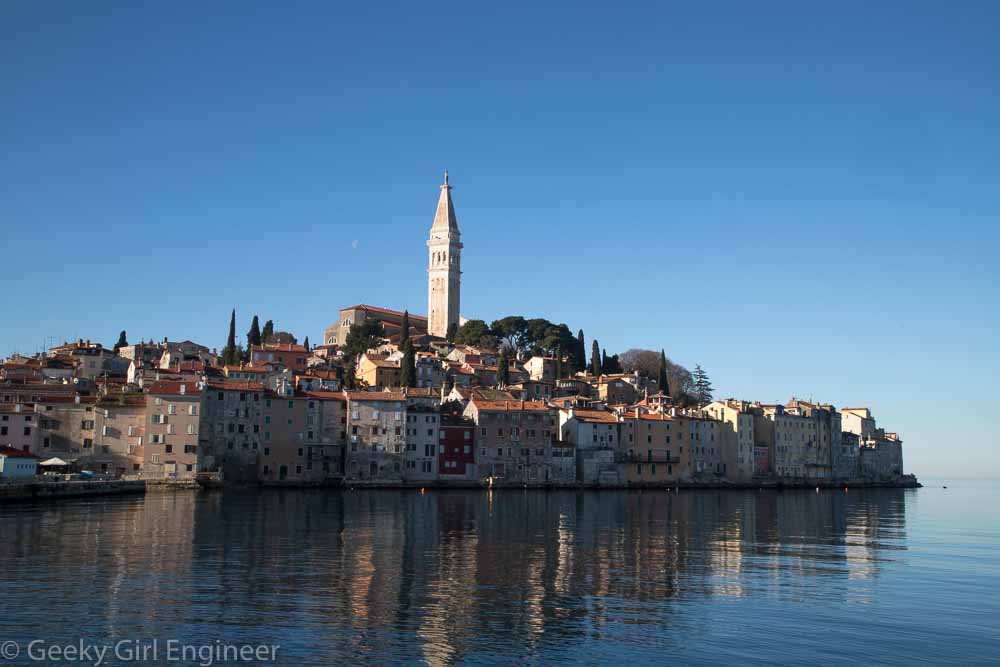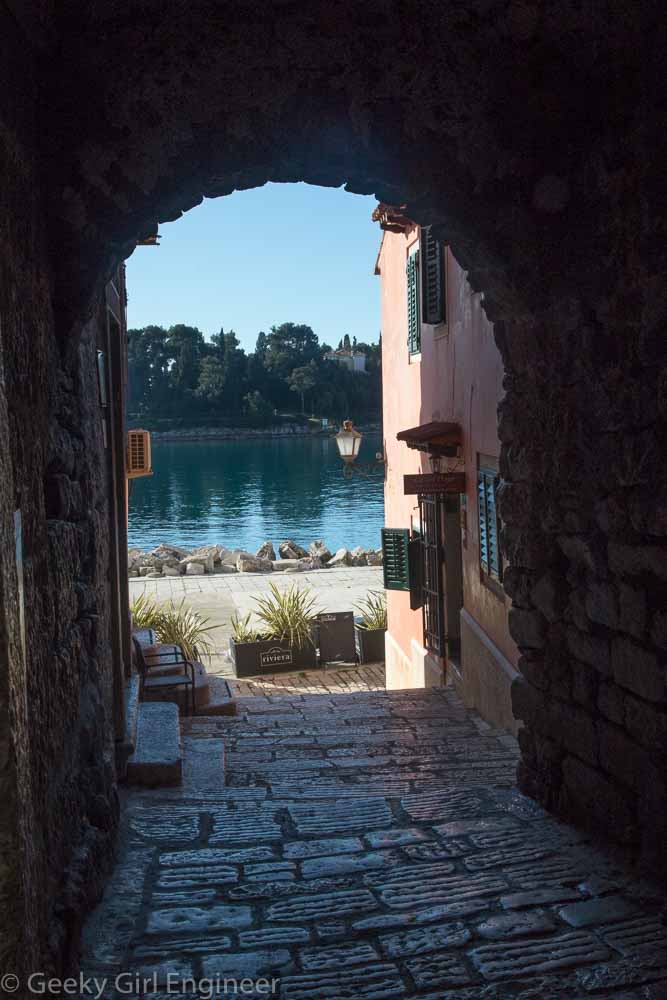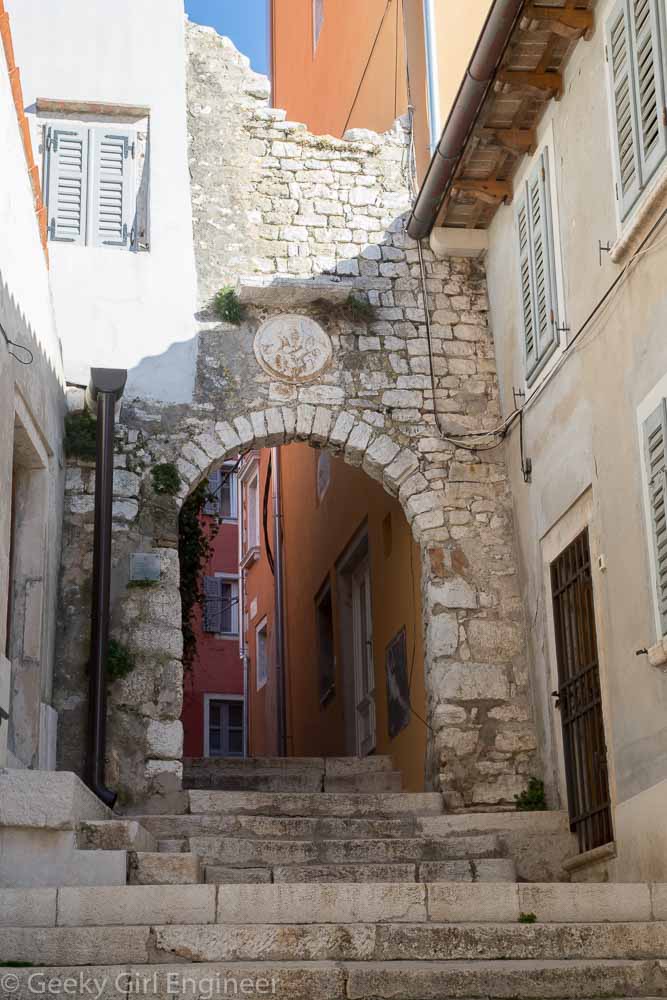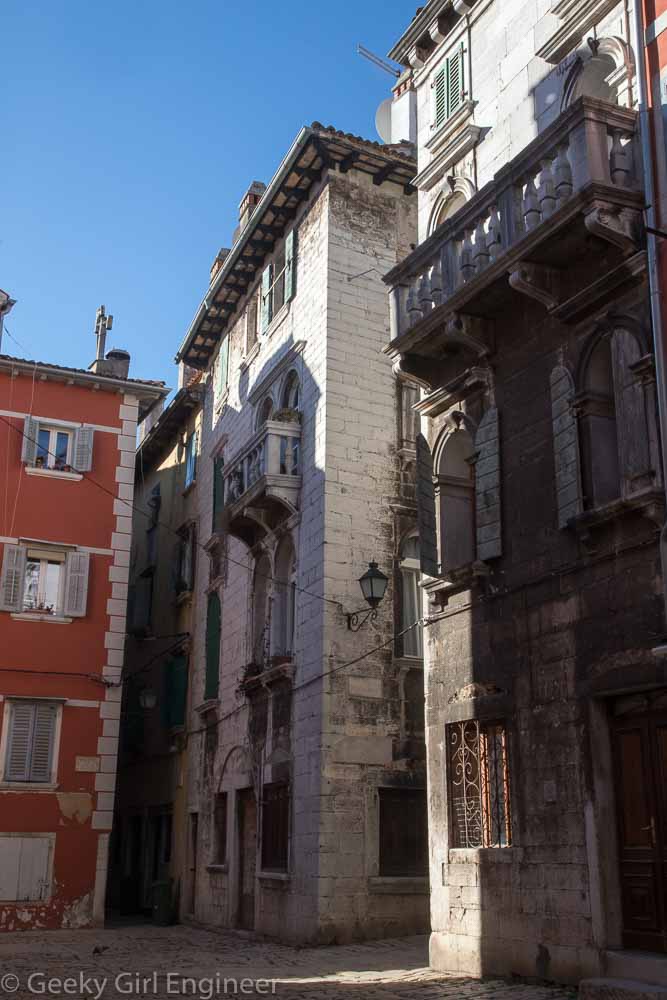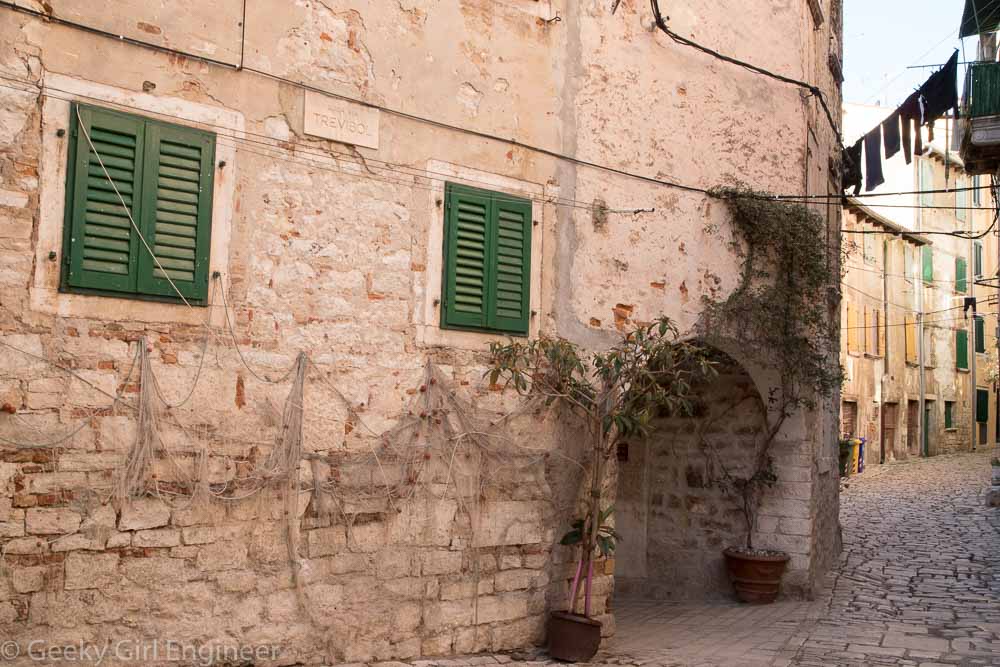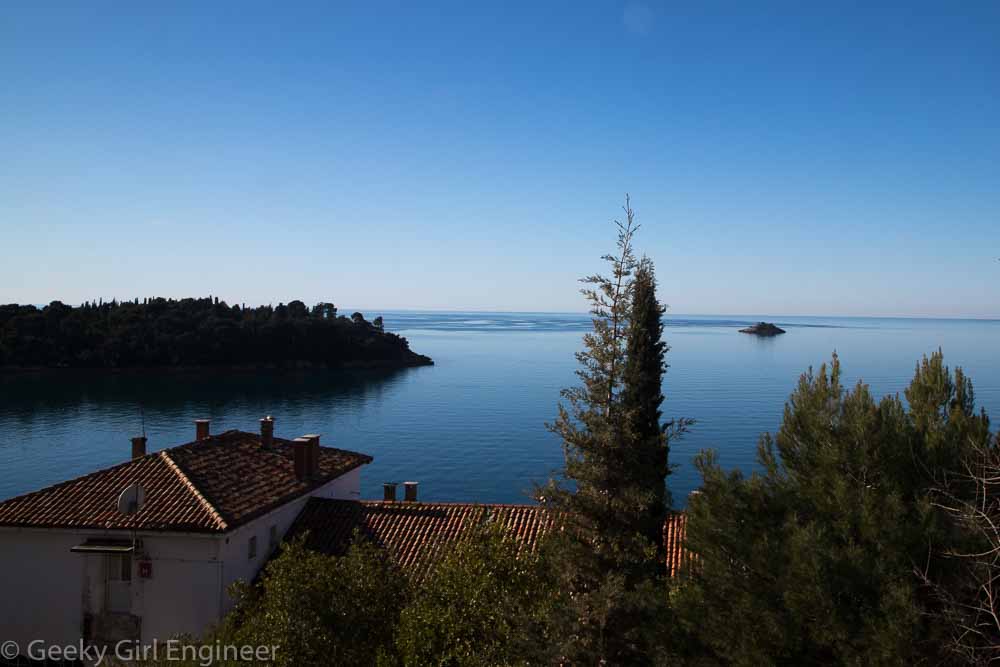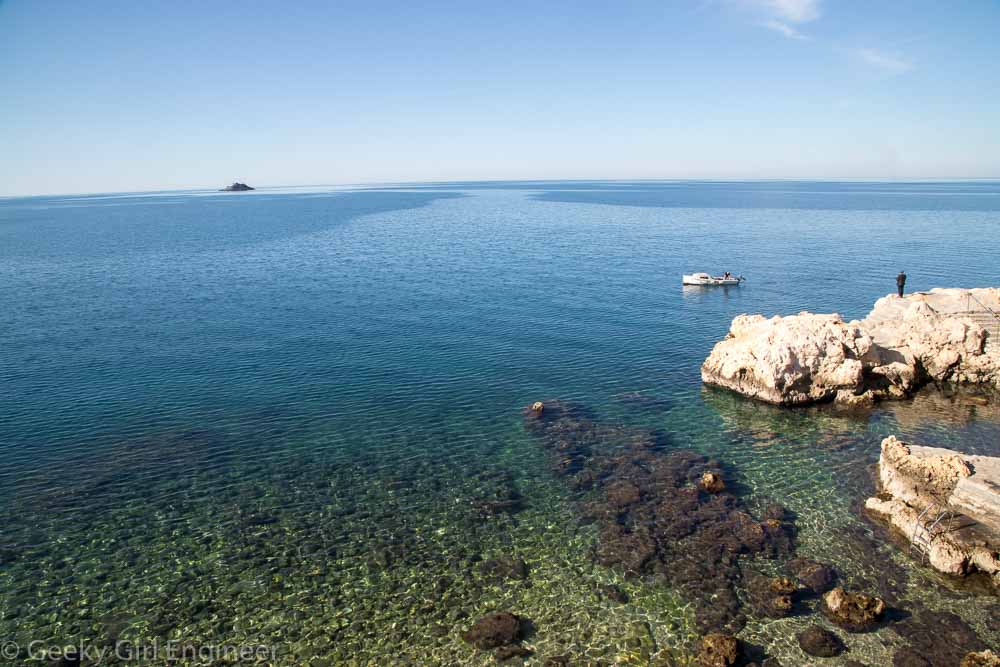I visited Totem Bight State Historical Park in Ketchikan today. It contains numerous totem poles, some of which are reproductions and some of which are inspired by older totem poles. Because they are newer, they are still colorful, which helps in understand both their meaning and also what the original poles looked like. There is also a gorgeous clan house, which you can go in. The park also features a short but nice walk through the temperature rainforest and also a beach.
Tag Archives: history
Bergamo, Italy
Today, my tour group left Verona for Como. We spent a couple of hours in Bergamo along the way. The new area of Bergamo is in the lower (elevation wise) part of the city. The older part of Bergamo is on top of a hill surrounding by a wall because everything old seems to be surrounded by a wall in these parts. I now believe I understand just how much the Romans were all about the walls. Bergamo is a cute little town that has two real important parts. First, it has a gorgeous chapel that is a mausoleum for a rich military man named Bartolomeo Colleoni, who evidently switched sides between Milan and Venice, and importantly is not to be confused with the fictional Corleone family of The Godfather. [Our tour guide was clear on this point.] Second, it was the birthplace of Pope John XXIII, and the cathedral has a permanent exhibit about this including his coffin, but not his body.


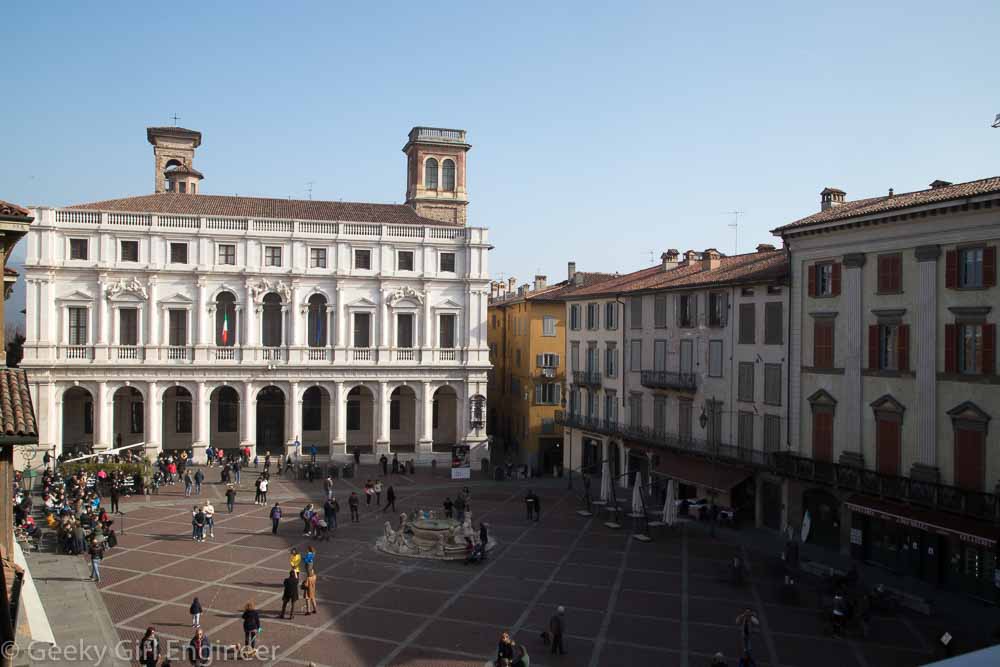

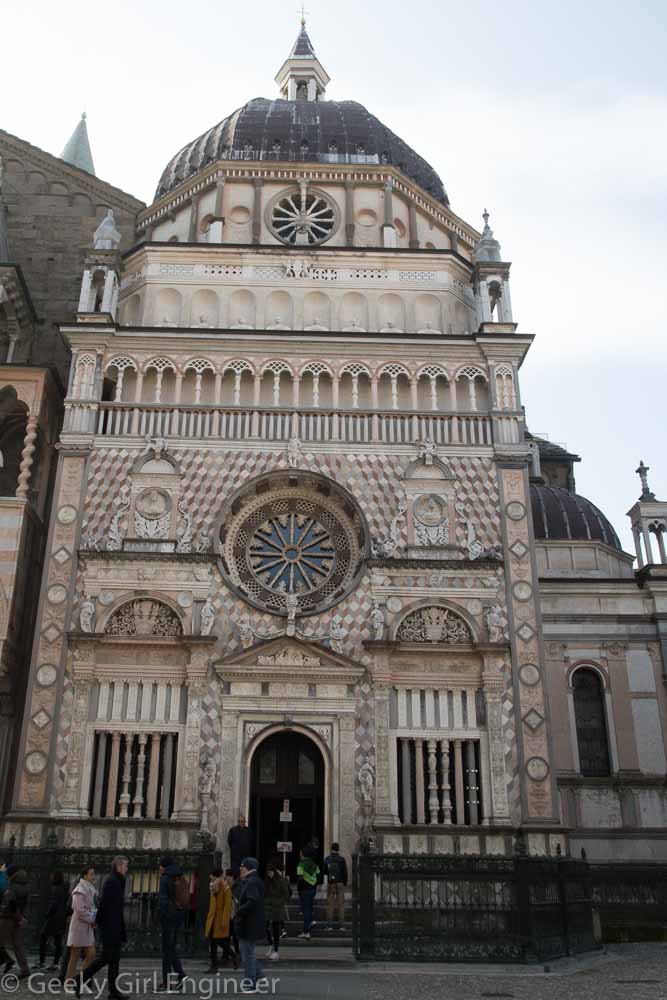


Sirmione, Italy
Today, my tour group visited Sirmione, which is a little town at the end of a tiny peninsula in Lago di Garda (Lake Garda). There is a well preserved castle there and an archeological site from the Roman era. There are also many hotels and spas in between. Climbing to the top of the tower of Castello di Sirmione provides amazing views of the lake and surrounding area including the mountains to the north. The archeological ruins appear to be of a pleasure villa at the very end of the peninsula, so it seems the area has been used for the same reason since the Romans.

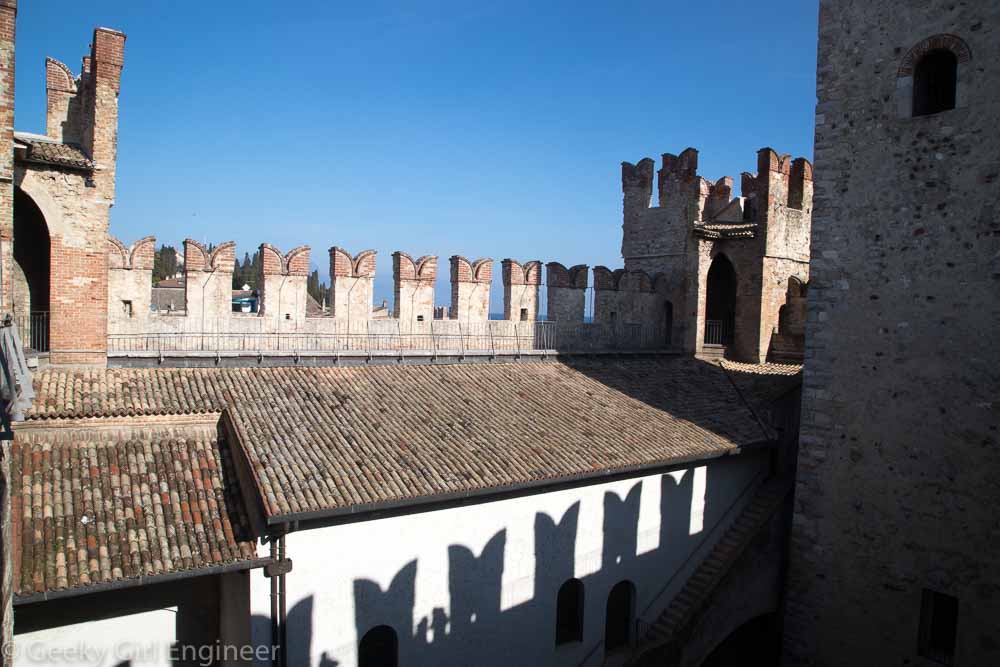

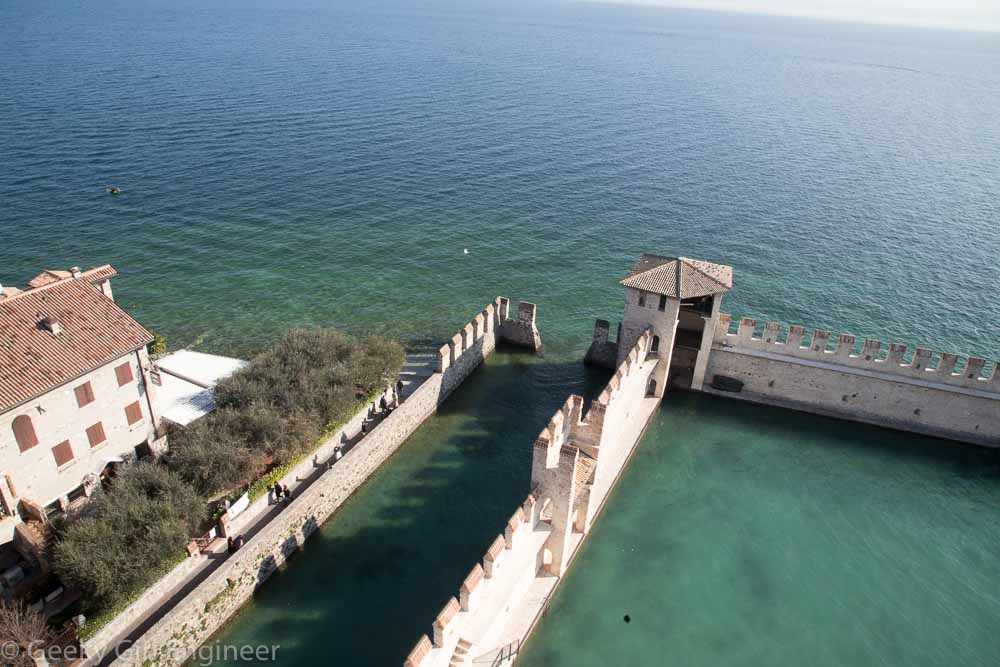
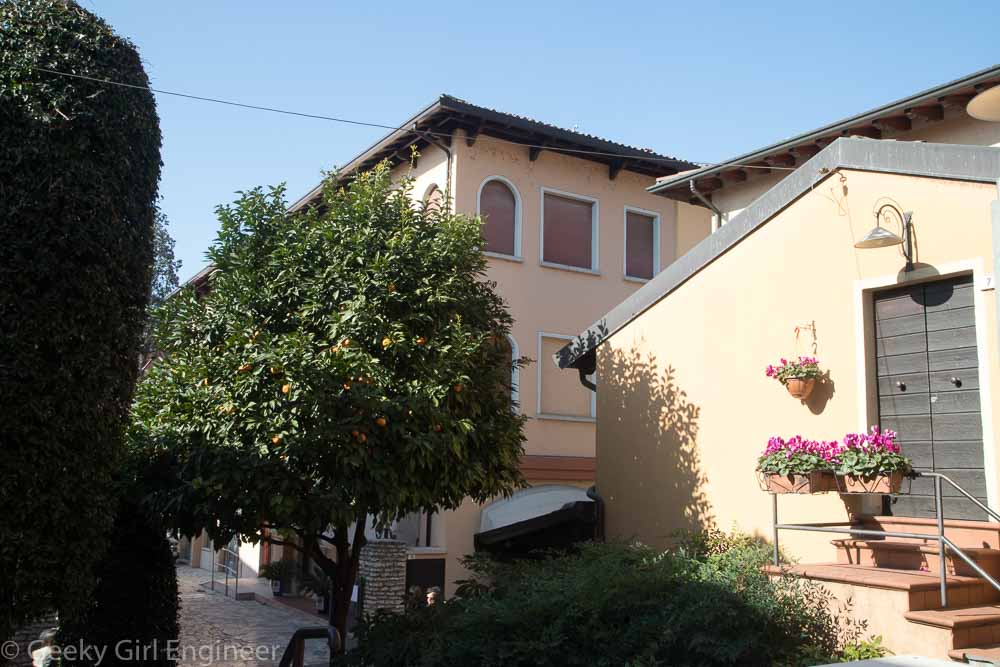
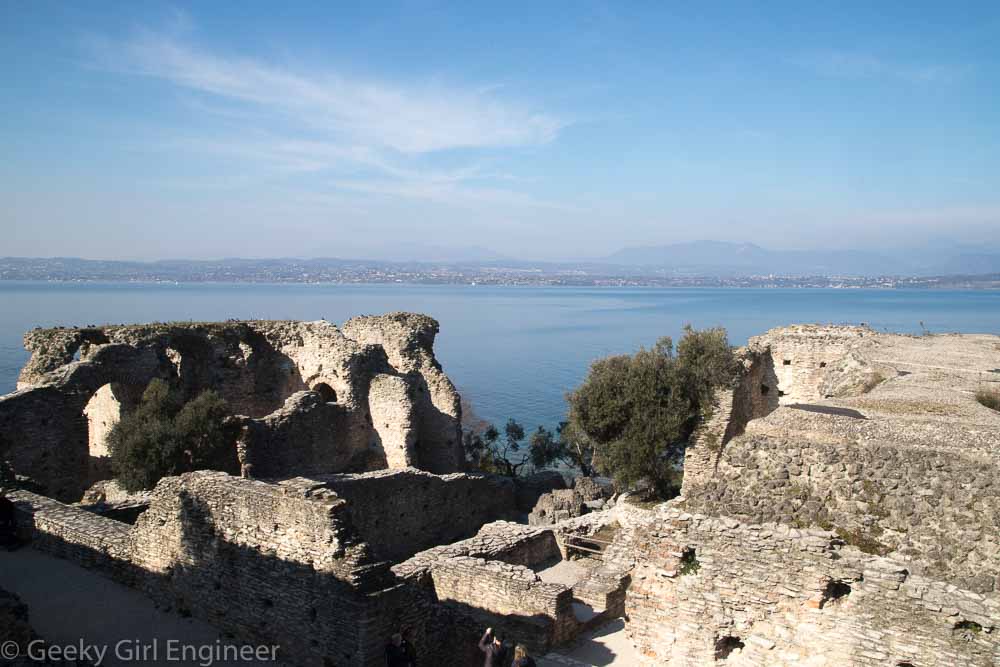
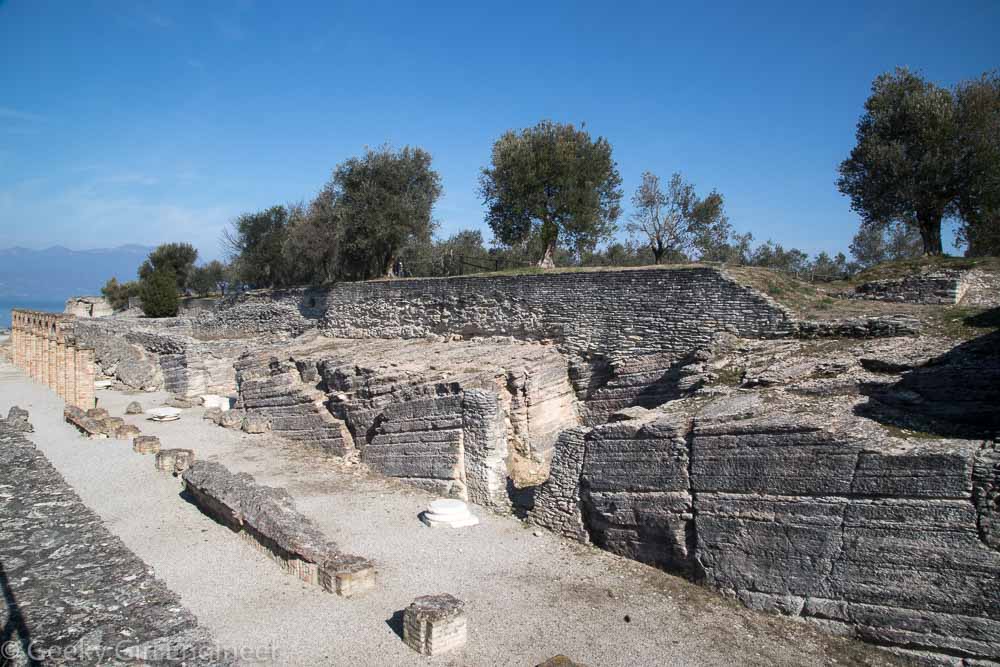

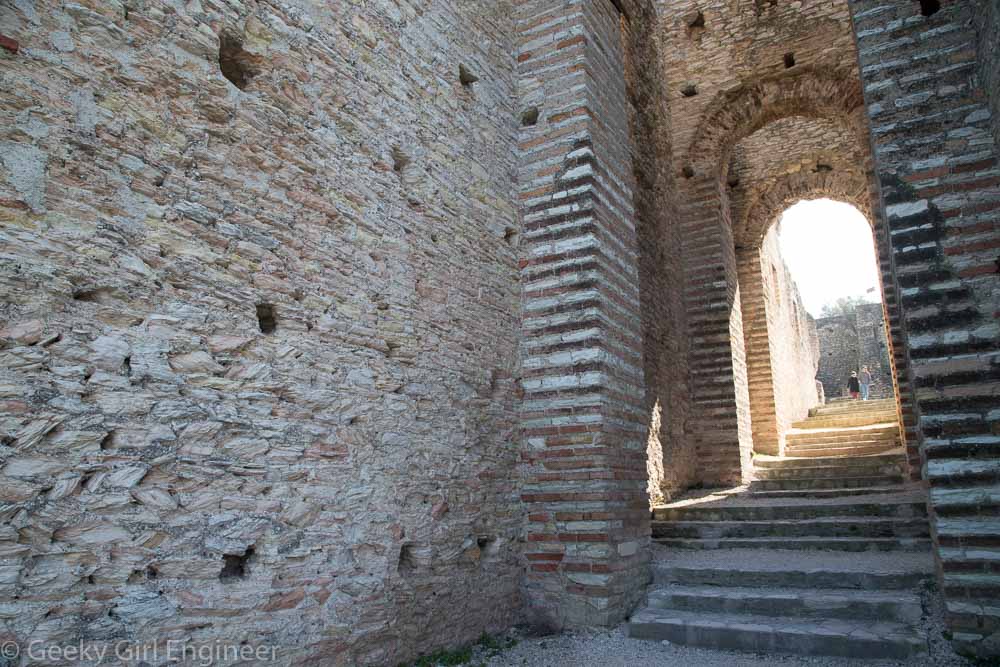
Verona, Italy
Yesterday, my tour group arrived in Verona, and today I had the whole day to explore it. Verona is a lovely, old city. It has remnants of when it was part of the Roman Empire, and it also has Venetian influences, as well as others. The city is the setting for Romeo and Juliet, and it fully embraces it. [It is also named in the title of The Two Gentlemen of Verona and part of its setting, but the city doesn’t seem to care about that.] According to our guide, Romeo and Juliet seems to be a mix of myth and truth. There were two families who lived here named Cappello and Montecchi, and there may have been teenagers from those families who committed suicide after falling in love. Short stories were written about it, and supposedly Shakespeare used those as starting material. Interesting note, Juliet is very popular here, and people write letters to her, and everyone goes to see a balcony that did not exist before Shakespeare that was supposed to be hers. [Juliet having a balcony seems to be partially a translation issue, as in the play, she was probably opening her window shutters.] Anyway, Romeo doesn’t seem to be nearly as popular as Juliet. Hardly anyone writes him letters. Poor Romeo.
Besides Romeo and Juliet, the old part of Verona is lovely to walk around. The Adige River flows around the old part of the city, and walking along it provides lovely views of the city and surrounding area.
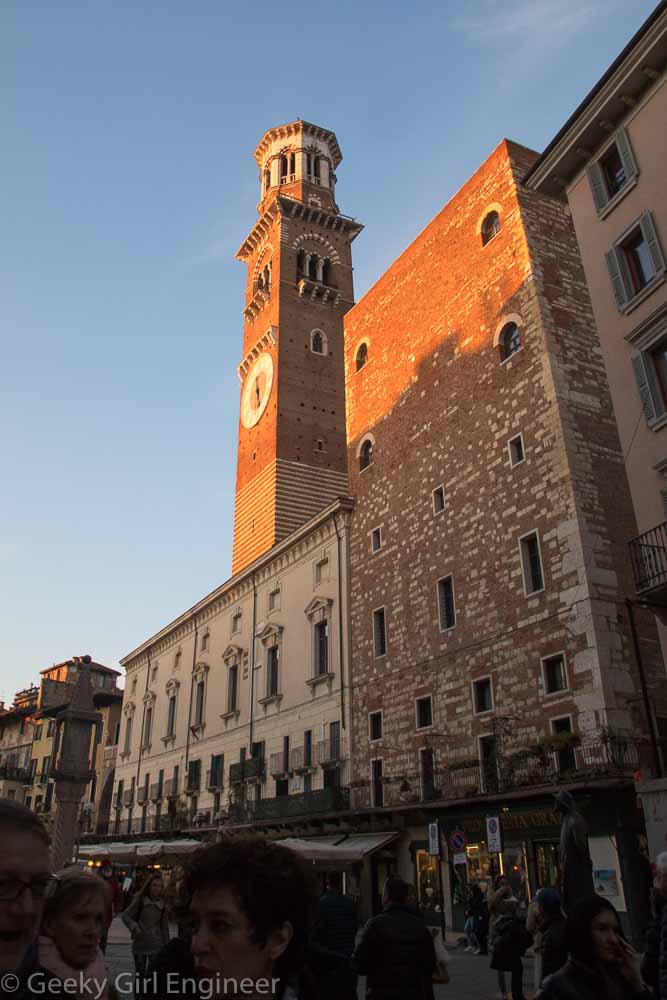
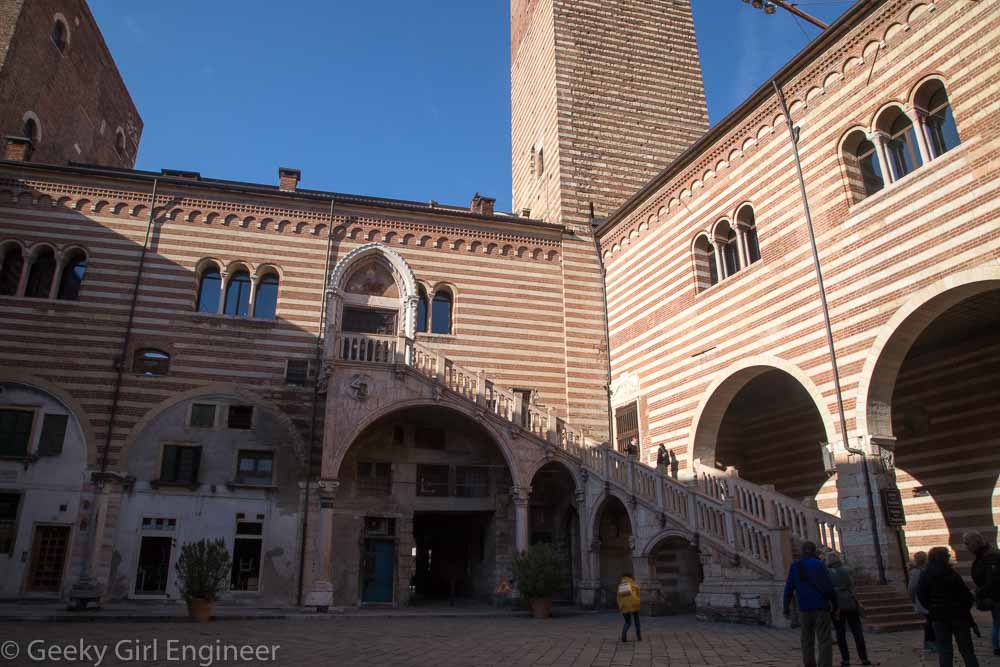


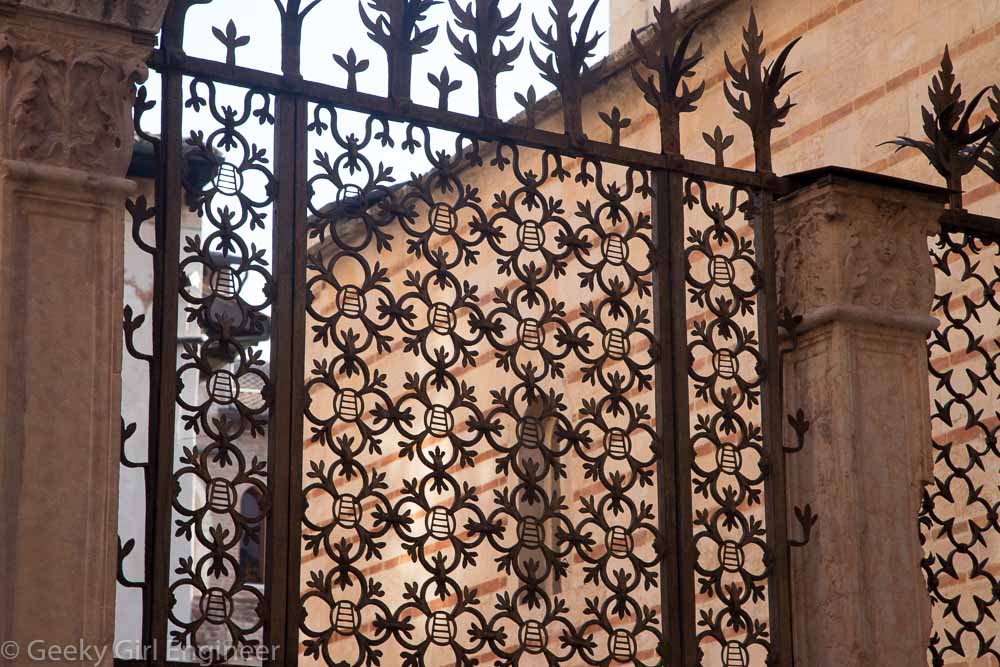


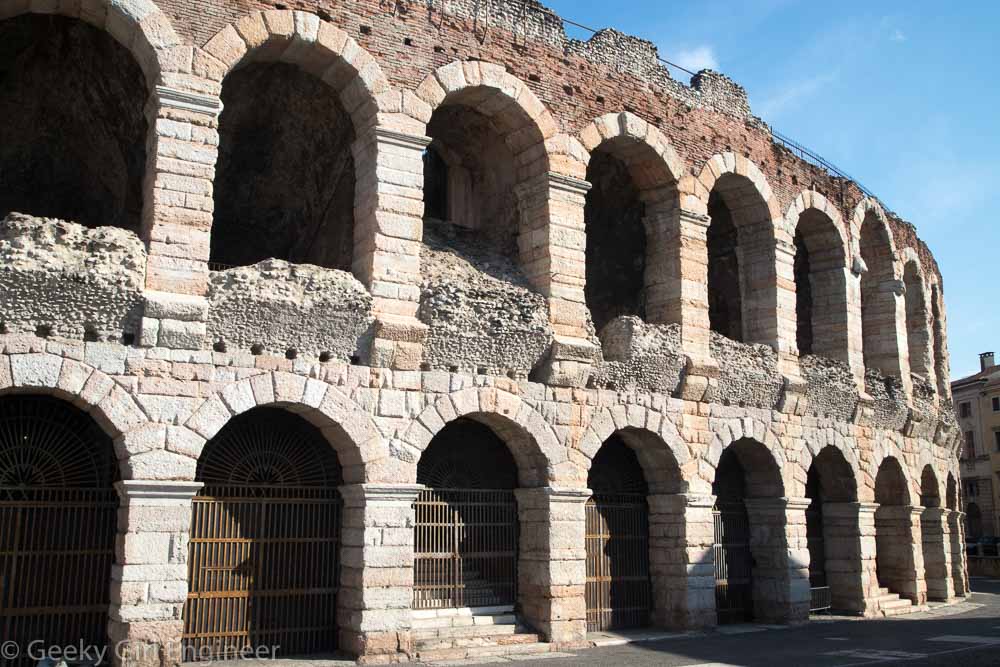

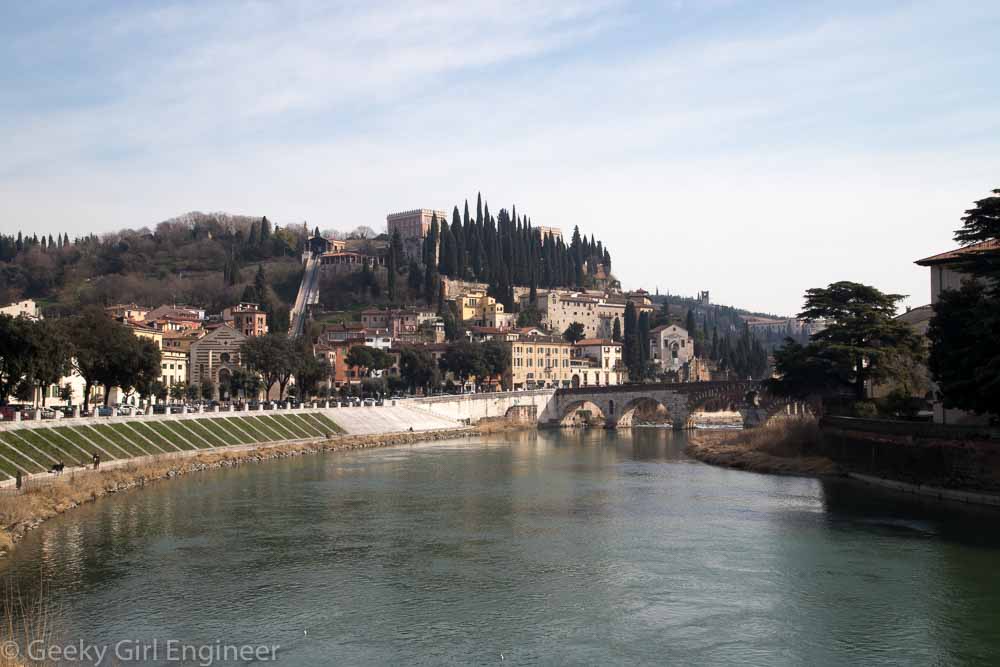


Trieste, Italy
Today my cruise visited Trieste. Trieste is an interesting city. The more touristy area near the water feels far more like central Europe, especially Austria. This makes sense since the area was part of the Austrian empire until after World War II. Further away from the older part of the city, the city loses much of its charm as it looks like a modern European city.
Our group visited an old church on top of a hill close to the city center where there are some Roman ruins. We also visited a Nazi concentration camp, Risiera di San Sabba. I am not posting any photos of that as the visit was a little overwhelming. The we wandered through parts of the older city center with its beautiful buildings.






Duino Castle
Today we were in Sistiana, Italy. In the afternoon, we hiked along the dolomite cliffs to Duino Castle. The hike provided some great views of the bay as well a little exercise. Along the hike, I saw some caterpillars as well as some some nice trees and rocks. The views were outstanding. The castle itself was nice, but I think I preferred the cliff. That is just a personal preference though.

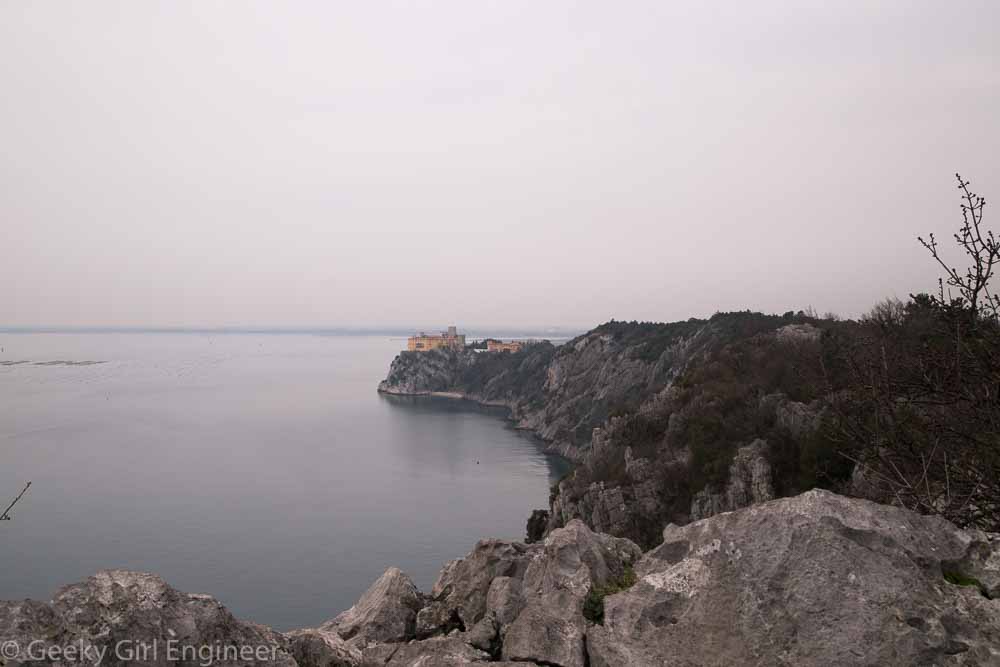

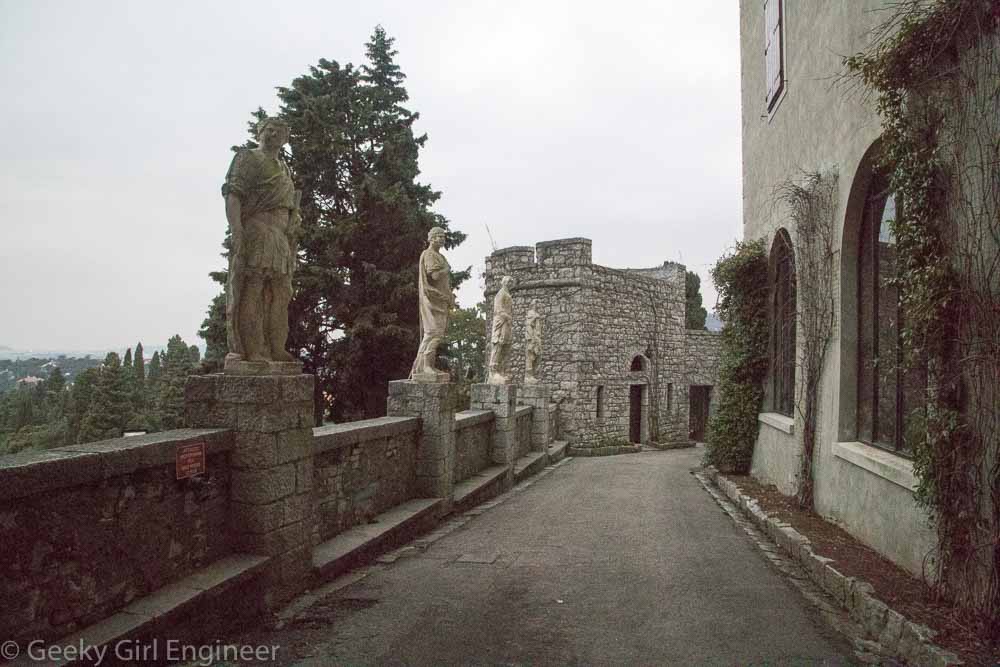
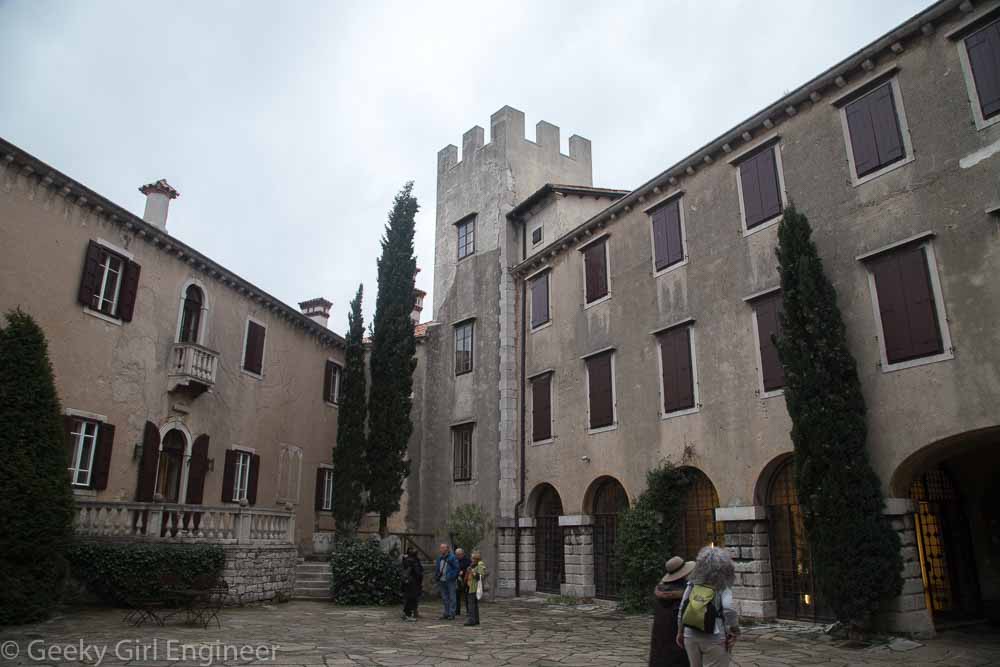
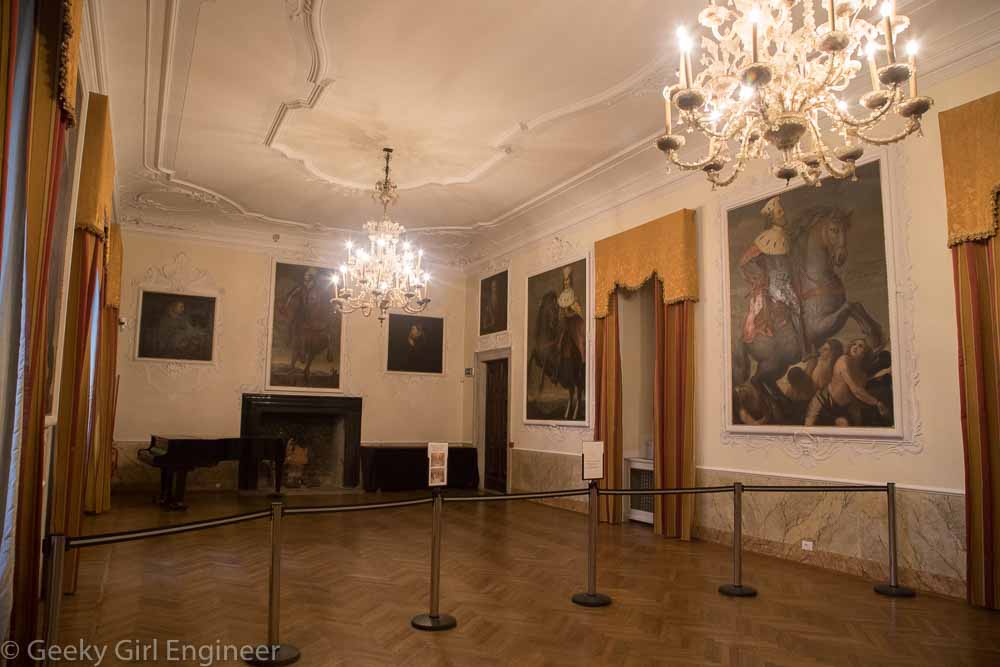
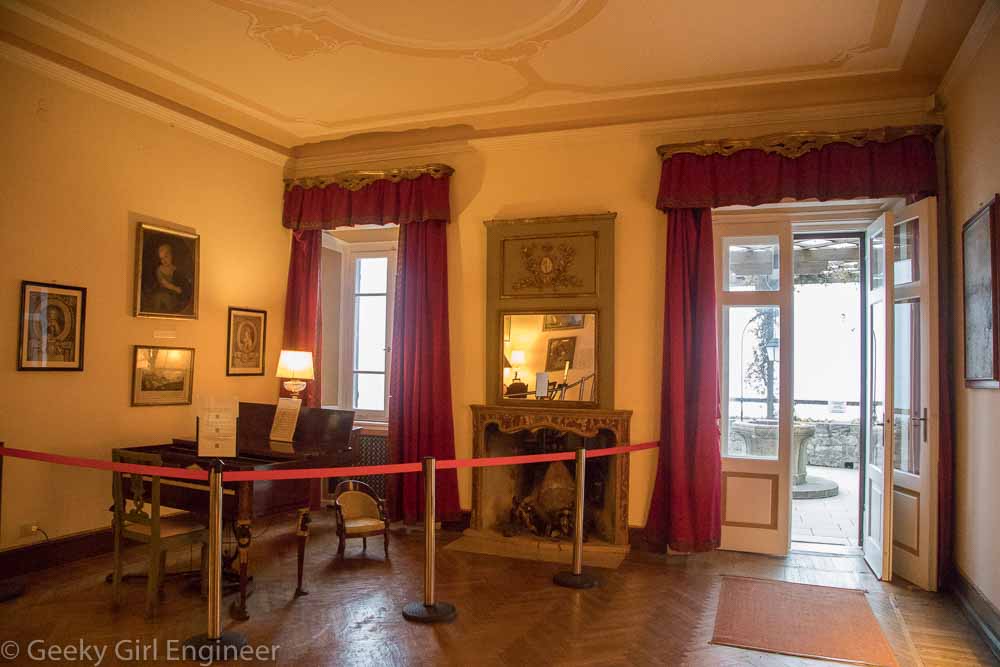
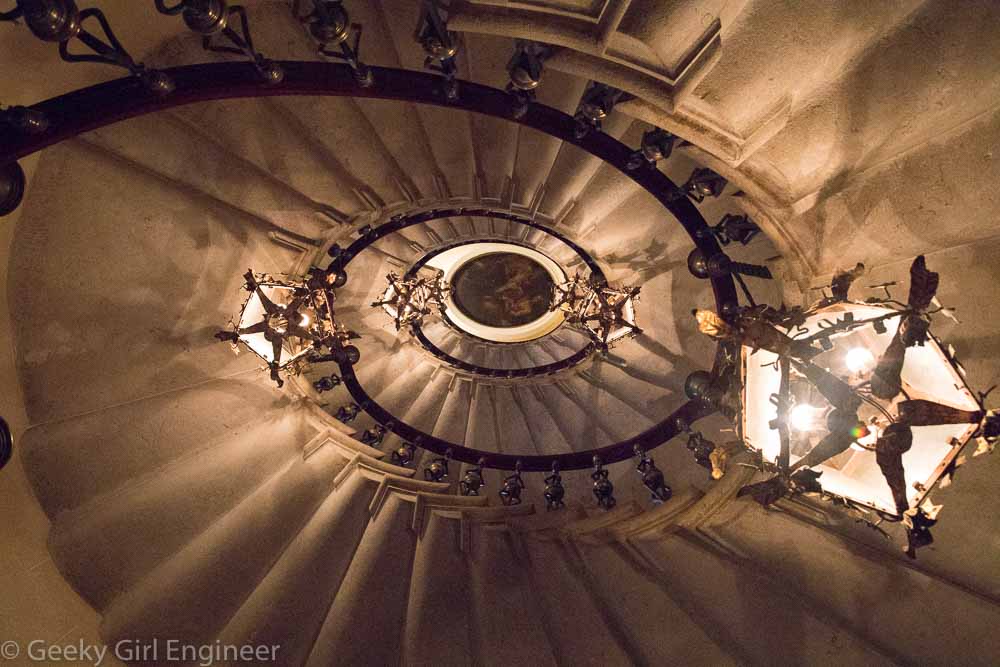
Aquileia, Italy
This morning we visited Aquileia, or more precisely the historic basilica there. The original church dates back to the 4th century, and there are some mosaics near the bell tower based that are probably from that era. The main part of the church is from the 11th and 14th centuries. While working on the church, they discovered beautiful mosaics under many more recent floors. Behind the church is the the Crypt of Frescoes with beautifully painted frescoes.
In 2000, they built a glass walkway, so people would not have to walk on the mosaics. The glass walkways were nicely designed and don’t touch the mosaics at all. In the main part of the church, they are supported by the columns. In an underground portion, the glass walkways are supported by steel wires attached to the ceiling.
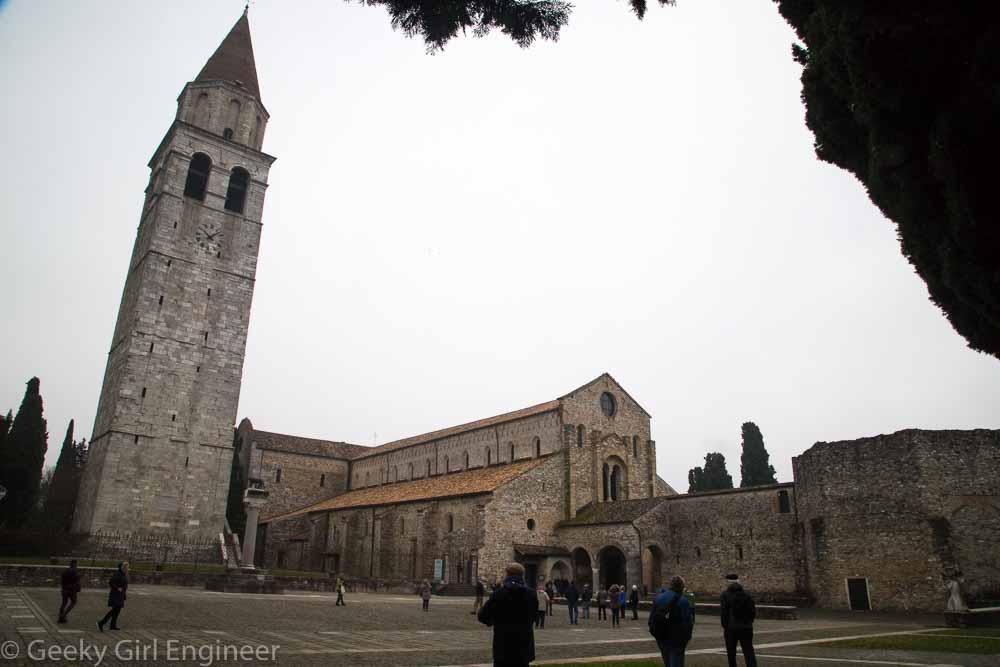
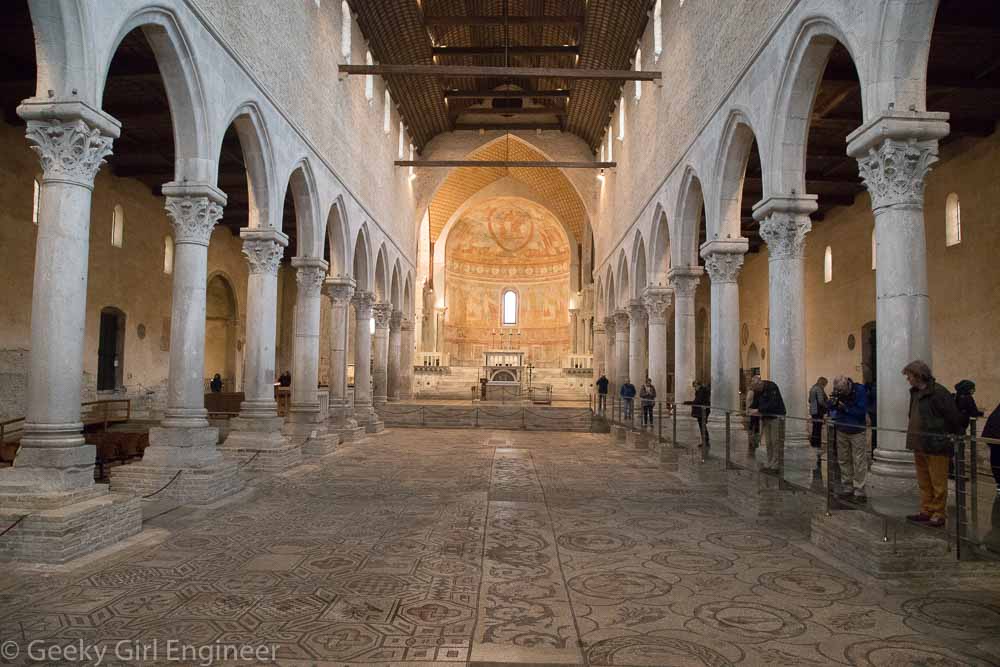
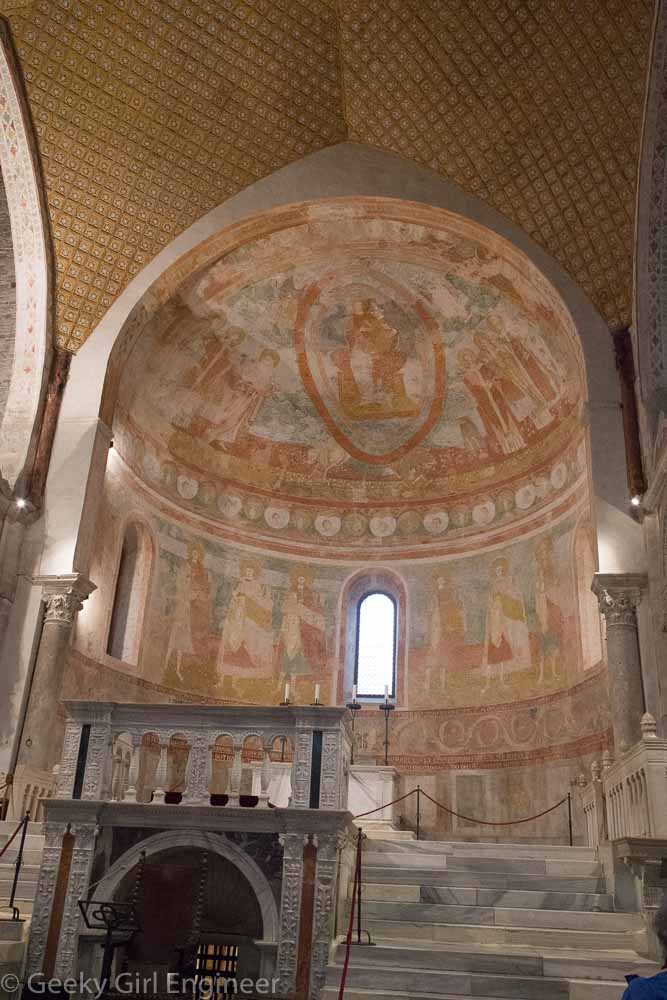

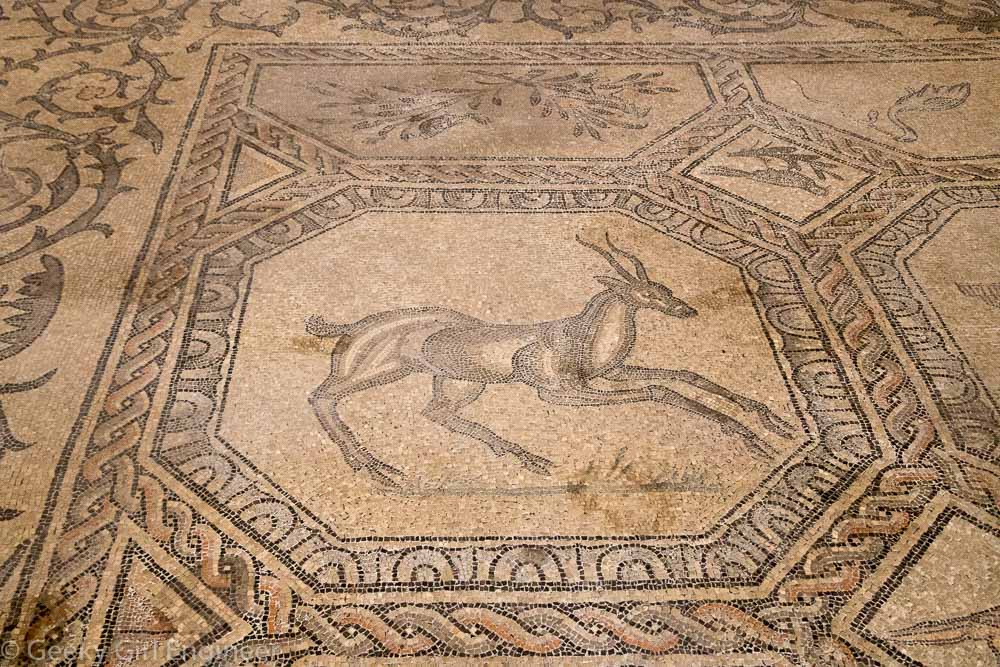
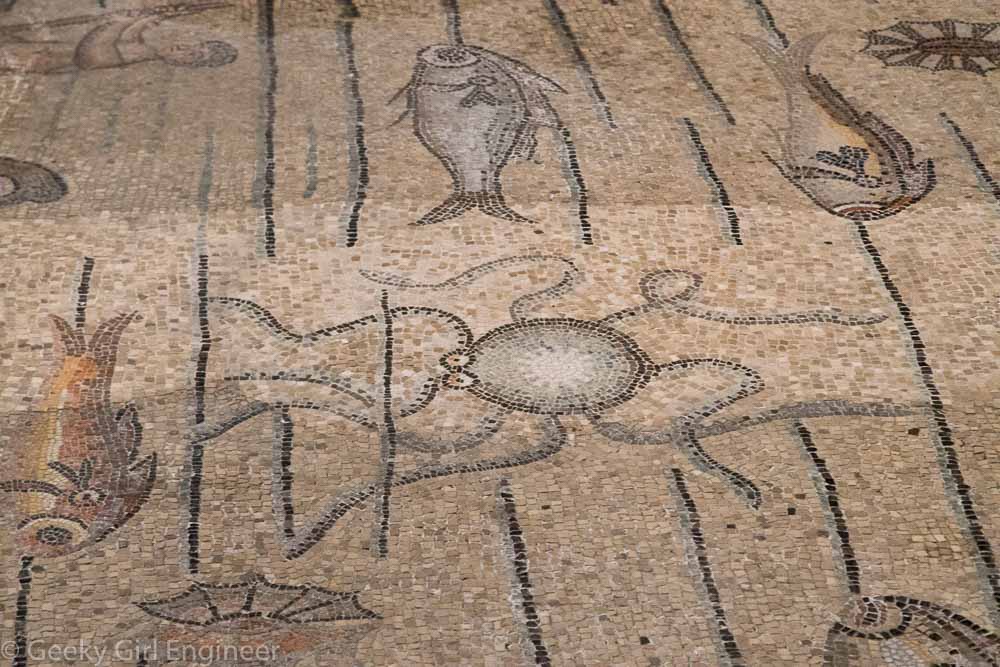







Bale, Croatia
This afternoon we visited Bale, Croatia, which our tour guide described as a sort of ghost town. The town is old, but it was bombed during World War II and was deserted after that. The government gave good deals to people to come and live in Bale and rebuild the city, but many of the buildings are still just shells with only the exterior walls somewhat existing. Currently it is is being rebuilt and renovated, and utility work was everywhere. It was fascinating to me to see the utility work done on the historic buildings and how some of it is hidden once finished.
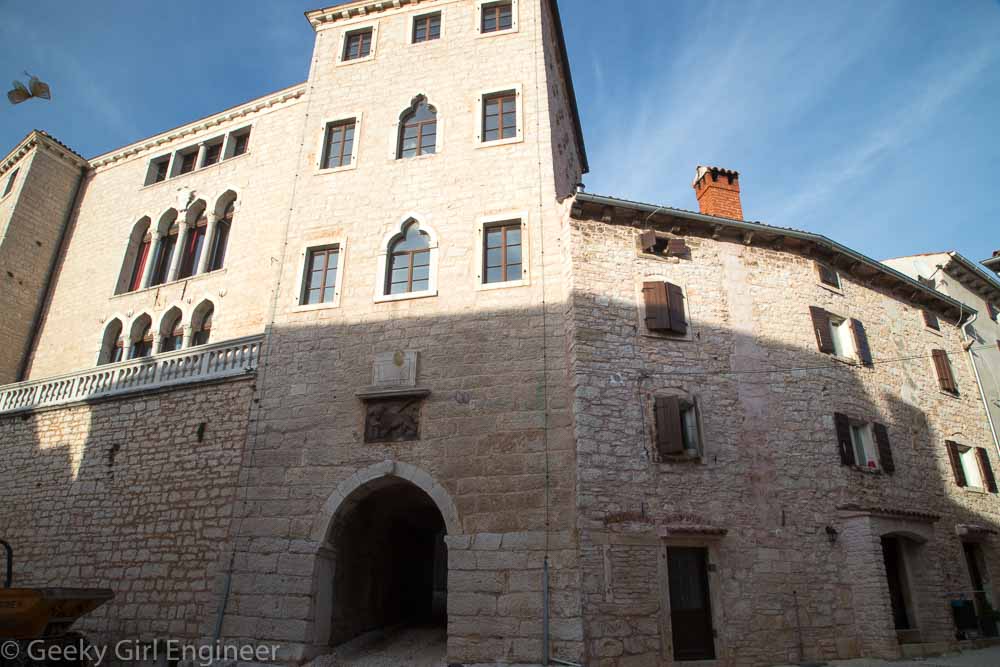


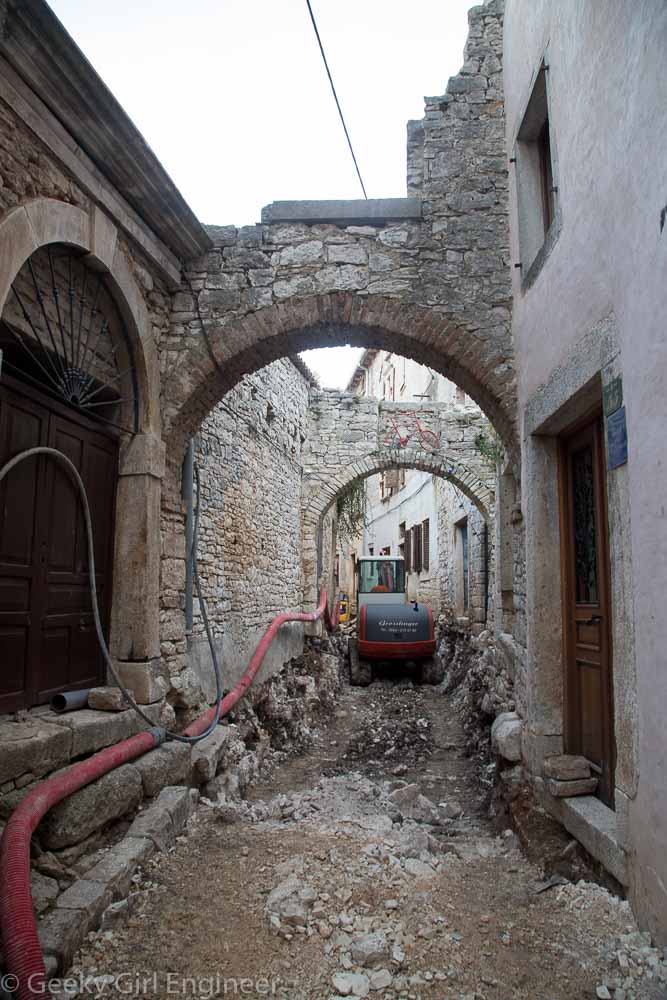
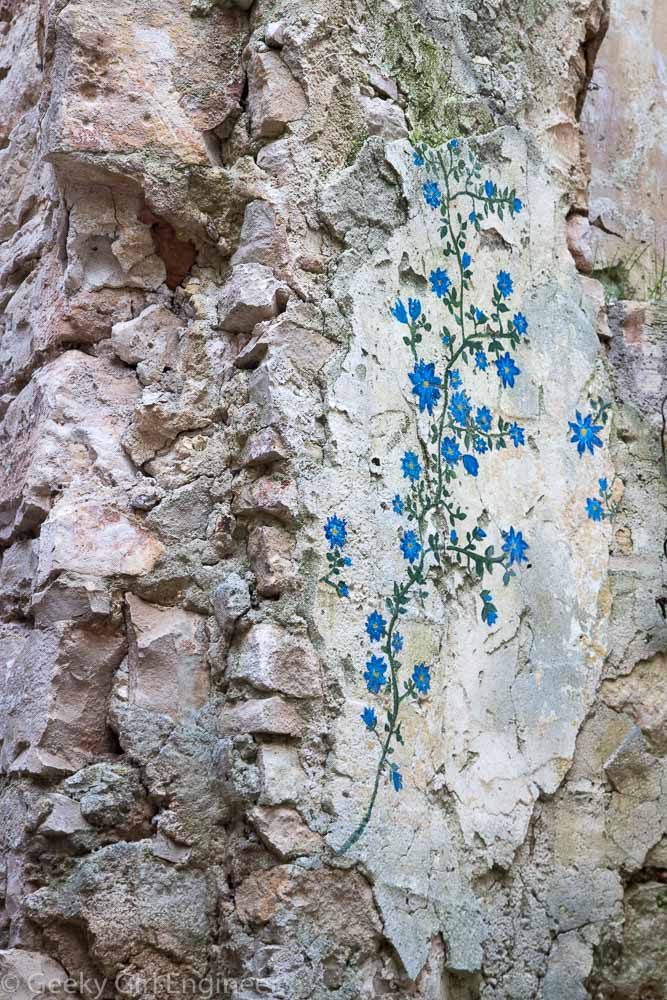

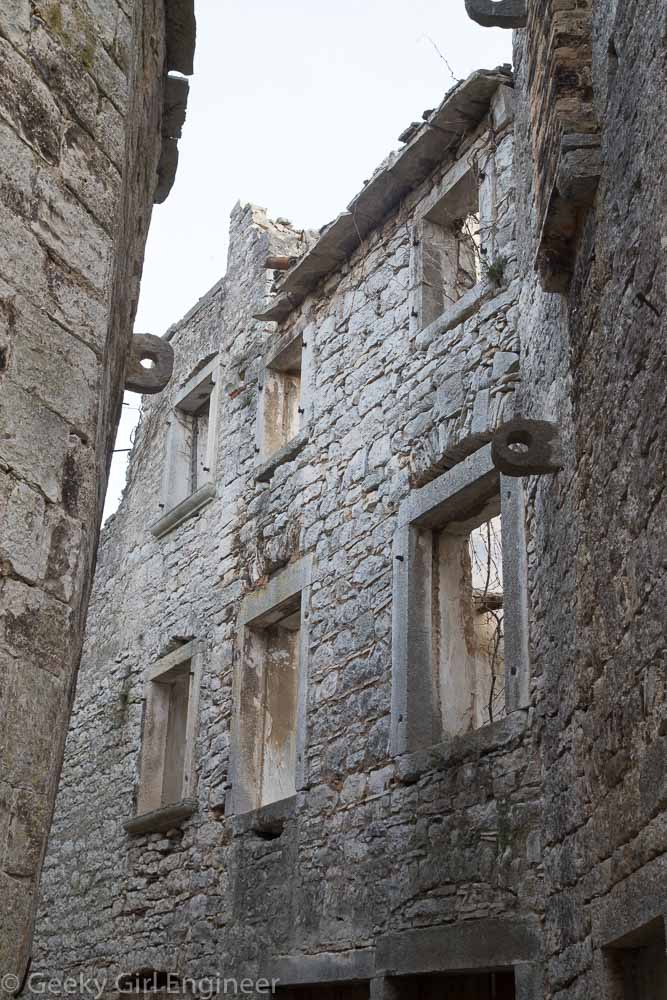
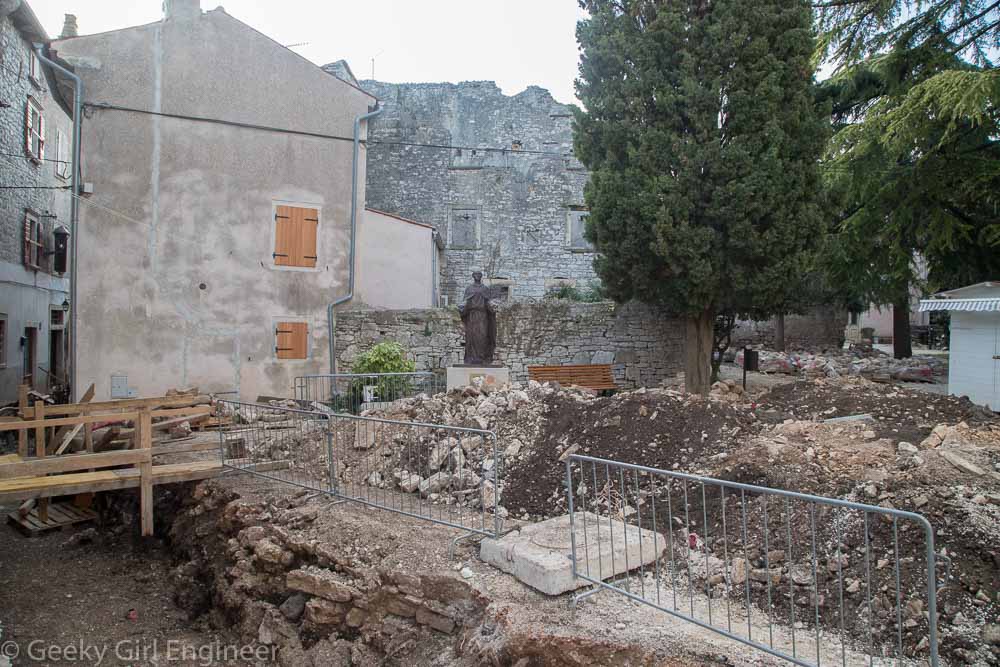
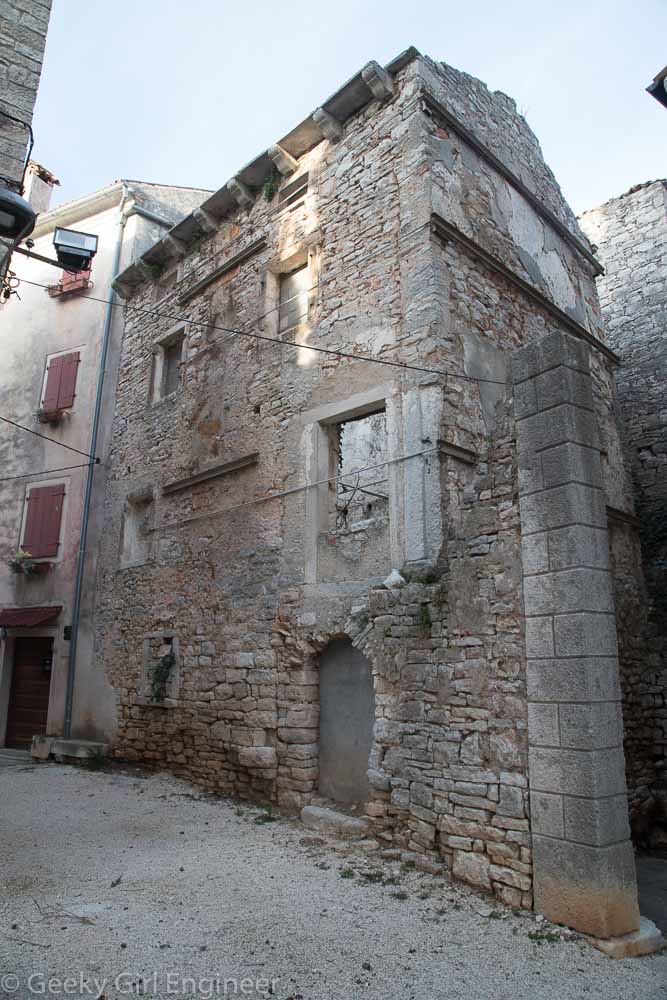
Poreč, Croatia
This morning we visited Poreč, Croatia, a town on the Istrian peninsula in the Adriatic Sea. Some of the architecture is Venetian, and some architecture is Austrian. It was founded by the Romans, although it has been inhabited since pre-historic times, and in the very old section of town, the street names are still the Roman names.
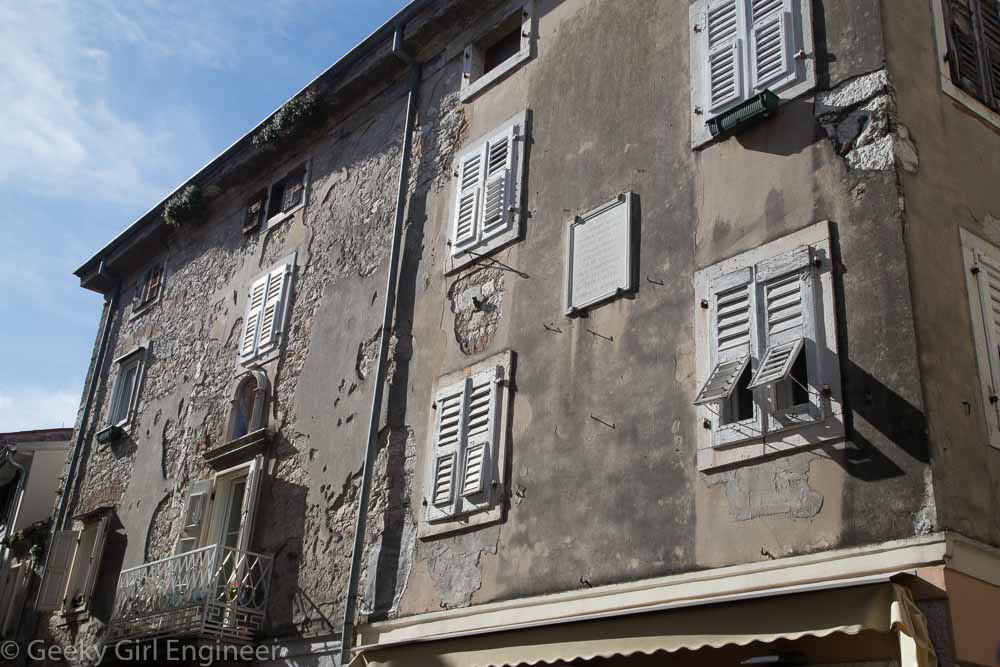
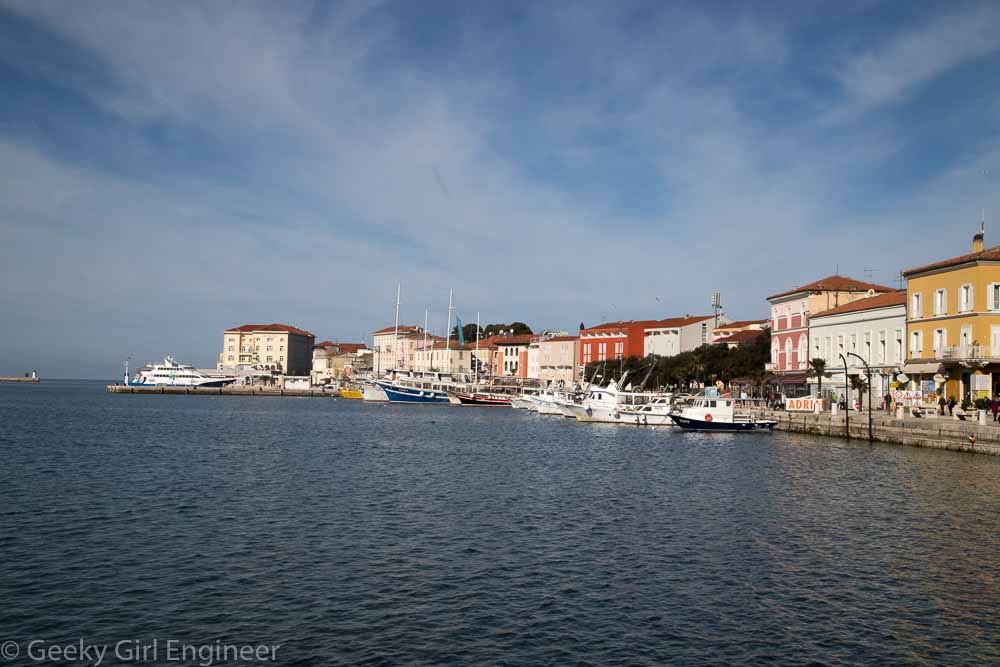

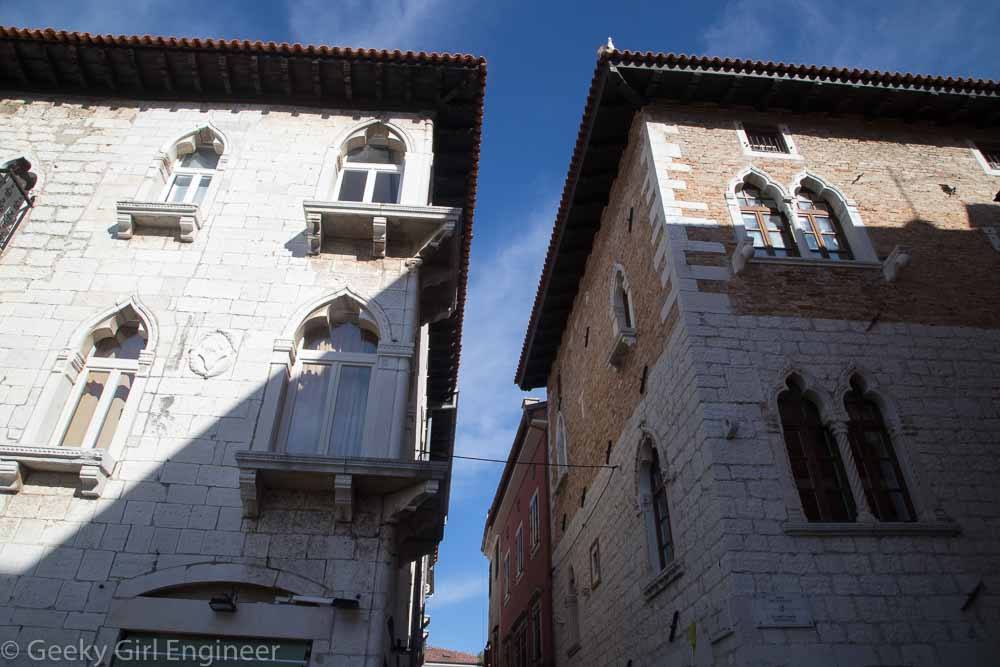

Rovinj, Croatia
Today my cruise arrived in Rovinj, Croatia. It is a small town on the Istrian peninsula. The town was originally an island, but eventually the spit between the island and the peninsula was filled to allow the town to grow larger. The original part of town is very old and still feels authentic. Everyone’s laundry hangs in the narrow alleys between the buildings. Parts of the original wall that surrounded the island and the arches that allowed entry are still visible. A top the island’s hill is a church and bell tower, which makes the former island look even more dramatic from afar.
